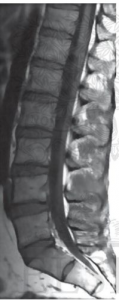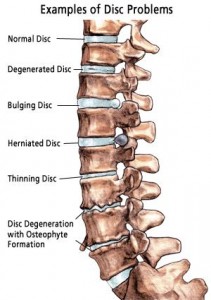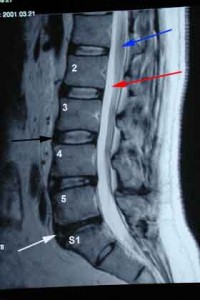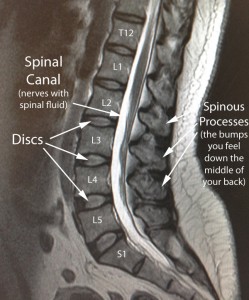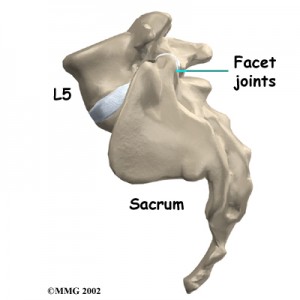 The lumbosacral joint is where the bottom of the lumbar spine, the L5 vertebra, meets the top of the sacrum, S1.
The lumbosacral joint is where the bottom of the lumbar spine, the L5 vertebra, meets the top of the sacrum, S1.
Last week I wrote about the instability of the thoracolumbar joint at the base of the ribcage, one of the most common places for postural problems to manifest.
The difficulty with the thoracolumbar joint is that it is home to a transition from the stability of the lumbar spine to the relative instability of the thoracic spine.
The shift from a solid section of the spine to a moveable section of the spine can get very complicated.
The lumbosacral joint deals with different issues.
The lumbar spine and the sacrum are both pretty solid. The sacrum, the triangular bone between the hips, is five separate bones at birth that calcify and become a single bone soon after we are standing and walking.
The lumbar spine is not as solid as the sacrum but it is built for stability.
It can flex and bend but has very little rotational capability—there is enough stress on these large bones having to bear and transfer the weight of the upright spine, shoulder girdle and head without them needing to twist.
While these two structures have little to no twisting capabilities in and of themselves, there is a rotation between the joint allowing for the oppositional movement of the pelvis and trunk in walking—when the sacrum moves left, the lumbar moves right.
Unfortunately, the lumbosacral is not the happiest joint—it tends to break down more often than many others. The difficulties that this joint experiences concern the load it bears, its unique shape, and our bad posture.
Difficulties of the Lumbosacral Joint
- This intervertebral disc between L5 & S1 bears a greater load than any other in the spine as the vertebral column makes its transition to the pelvis.
- The shape is unique—it is the only wedged-shaped disc in the spine. It is thinner at the back and thicker in the front accommodating a shift in the bony alignment of the spine.
- Our poor posture habits tend to put extra load on all of the lumbar discs because of our propensity for standing with the shoulders behind the hips and leaning back slightly. If the upper body aligns behind the pelvis when we are standing and walking the lumbar spine is always slightly compressed.

The room for error when it comes to posture is fairly small.
The slightest shift of the pelvis and legs, or the upper body, forward or back, has a profound impact on the spine.
Both of these directional shifts affect the lumbosacral joint particularly.
The slightest deviation from neutral puts undue stress and strain on this crucial joint. Getting the shoulders on top of the pelvis and the legs directly under the pelvis is essential to balancing an upright spine.
 The spine should be vertical. When the spine is vertical on top of a pelvis in a neutral position, L1, the first vertebra of the lumbar spine is directly above S1 where it meets L5.
The spine should be vertical. When the spine is vertical on top of a pelvis in a neutral position, L1, the first vertebra of the lumbar spine is directly above S1 where it meets L5.
Follow that line up the spine and it passes through the atlas and the axis at the top just below the head.
Any deviation from vertical will affect the intervertebral discs which can bulge, herniate and degenerate over time.
The lumbosacral joint as a gateway between the upper and lower body is a particularly vulnerable and prone to skeletal problems (stenosis, degenerative disc disease, the spondylo’s) and muscular imbalances.
Problems with the spine happen for many reasons—some inherited, some the natural rigors of age and others from injury and accident.
While improving walking patterns and posture is not necessarily a cure all for everyone, changing the way you walk coupled with developing balanced muscle tone can help to develop an environment for a better support system.
***

